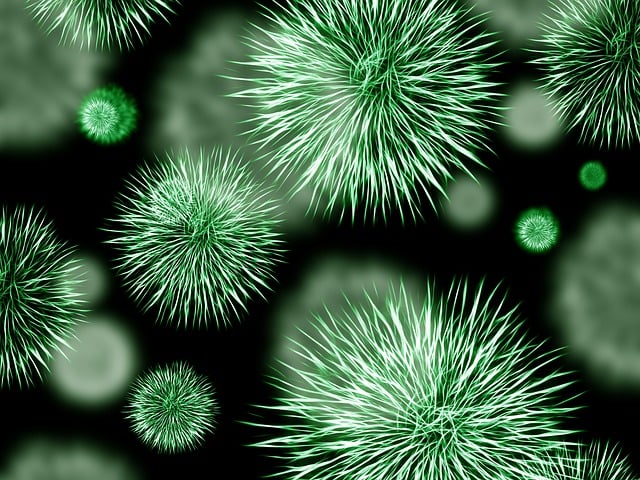Summary Clinical discrimination of posterior uveitis entities remains a challenge. This exploratory cross-sectional study investigated the green (GEFC) and red emission fluorescent components (REFC) of retinal and choroidal lesions in posterior uveitis to facilitate discrimination of different entities. The eyes were imaged using color fundus photography, spectrally resolved fundus autofluorescence (Color-FAF), and optical coherence tomography. Retinal/choroidal lesion intensities of GEFC (500–560 nm) and REFC (560–700 nm) were determined, and intensity-normalized Color-FAF images were compared for shot chorioretinopathy, ocular sarcoidosis, multifocal placoid pigment epitheliopathy acute posterior choroidopathy (APMPPE), and punctate internal choroidopathy (PIC). Multivariable regression analyzes were performed to reveal potential confounders. 76 eyes of 45 patients with a total of 845 lesions were included. The mean GEFC/REFC ratios were 0.82 ± 0.10, 0.92 ± 0.11, 0.86 ± 0.10, and 1.09 ± 0.19 for chorioretinopathy in pellets, sarcoidosis, APMPPE, and lesions. PIC, respectively, and were significantly different in repeated measures ANOVA (p < 0.00). Nonpigmented retinal/choroidal lesions, macular neovascularizations, and fundus areas of choroidal thinning had predominantly GEFC and pigmented retinal lesions predominantly REFC. Color-FAF imaging revealed the involvement of short- and long-wavelength emission fluorophores in posterior uveitis. The GEFC/REFC ratio of retinal and choroidal lesions was significantly different between different subgroups. Therefore, this new imaging biomarker could help in the diagnosis and differentiation of posterior uveitis entities. |
Comments
It is estimated that between five and ten percent of blindness worldwide is caused by the rare inflammatory eye disease uveitis . Posterior uveitis , in particular, is often associated with severe disease progression and the need for immunosuppressive therapy. In posterior uveitis, inflammation occurs in the retina and the underlying choroid that supplies it with nutrients. Researchers from the Department of Ophthalmology at the University of Bonn have tested color-coded fundus autofluorescence as a new supportive diagnostic method. Retinal fluorescence can be used to infer the subtype of uveitis. This is an essential prerequisite for accurate diagnosis and treatment of the disease. The results have now been published in Scientific Reports.
Blurred vision, floaters and unusual light perception: those affected by the rare posterior uveitis do not feel pain. "But the consequences can be serious: about five to ten percent of blindness worldwide is caused by uveitis. Uveitis is a rare disease, but posterior uveitis in particular has a poor prognosis and often requires immunosuppressive therapy," explains Dr. Maximilian Wintergerst from the Department of Ophthalmology at the University of Bonn. There are different forms of the disease. In posterior uveitis, the retina or choroid of the eye becomes inflamed. While the retina converts incident light into nerve impulses, the choroid supplies nutrients to the outer layers of the retina.
Different therapeutic management
"It is not easy to distinguish between the numerous subtypes of uveitis," says Wintergerst. However, since different subtypes often require a different therapeutic approach, a reliable diagnosis is even more important. That is why researchers from the Department of Ophthalmology at the University of Bonn, together with colleagues from the Departments of Medical Biometrics and Rheumatology at the University Hospital of Bonn and the University Hospital of Ophthalmology in Bern (Switzerland), investigated a new imaging technique that can help in the diagnosis of posterior uveitis.
The team evaluated color-coded fundus autofluorescence (spectral resolved autofluorescence imaging). The company CenterVue (iCare) from Padua, Italy, provided the newly developed device to the researchers for the examinations. This process consists of illuminating the retina with bluish light. The retina absorbs light and re-emits it at a different wavelength. The device measures this fluorescence and splits the signals into a green and red component.
"The green-to-red ratio of light emitted by each inflammatory focus depends, among other factors, on the exact subtype of posterior uveitis involved," explains Wintergerst. Researchers examined the eyes of 45 study participants. In all of them, the exact subtype of uveitis was previously diagnosed. This included findings from ophthalmological examinations, laboratory investigations, serological and radiological findings and, in some cases, genetic and interdisciplinary clinical examinations.
More reliable diagnoses with color-coded fundus autofluorescence
The researchers evaluated the green-to-red ratio in fundus fluorescence of about 800 inflammatory foci in the patients’ eyes. "Our results indicate that this ratio may be very characteristic and useful as a marker to differentiate the various subtypes of posterior uveitis," says Prof. Dr. Robert Finger, co-author of the study and head of the uveitis clinic at the Department of Ophthalmology at the University Hospital Bonn. "It could allow us to make more reliable diagnoses in the future." This is a big step for the Department of Ophthalmology at the University of Bonn, especially since Finger coordinates the Germany-wide uveitis registry "TOFU" (Treatment Exit Options for Non-Infectious Uveitis, www.tofu-uveitis-register.de ) together with colleagues from Münster. The goal is to document long-term disease progression and develop recommendations for treatment guidelines.
"In the current study, we present the precise technical background of color-coded fundus autofluorescence in ophthalmology in collaboration with our international partners," says head of department Prof. Dr. Frank Holz. "This technology may also allow for better monitoring of posterior uveitis in the future, as well as more reliable diagnoses."
Money:
The study was funded by the BONFOR-GEROK program of the Faculty of Medicine of the University of Bonn.
Reference : Maximilian WM Wintergerst, Nicholas R. Merten, Moritz Berger, Chantal Dysli, Jan H. Terheyden, Enea Poletti, Frank G. Holz, Valentin S. Schäfer, Matthias Schmid, Thomas Ach, Robert P. Finger: Spectrally Resolved Autofluorescence Imaging in Posterior Uveitis, Scientific Reports , DOI: 10.1038/s41598-022-18048-4
















